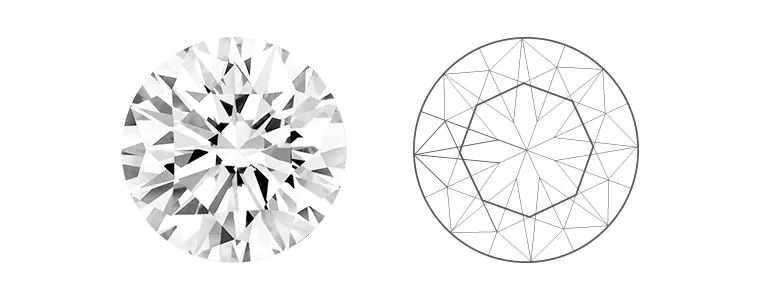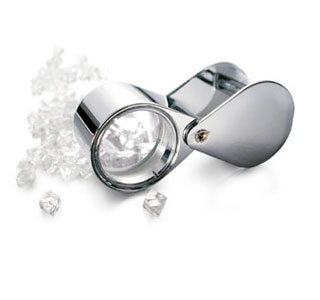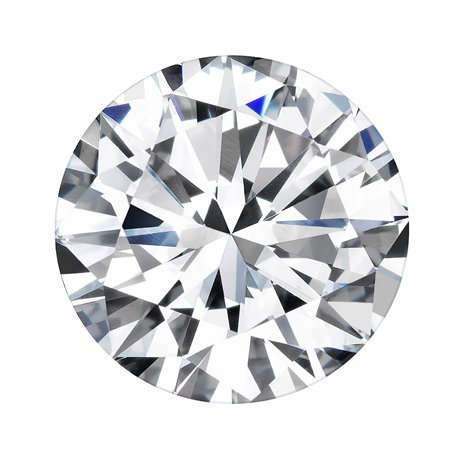
Round Cut Diamonds are one of the most popular while the classic shape represents eternal love. This circular shape shows the 58 auxiliary eye-catching facets of the diamond. It maximizes and captures the light from all angles, which is why it is popularly guided to as a round brilliant diamond.
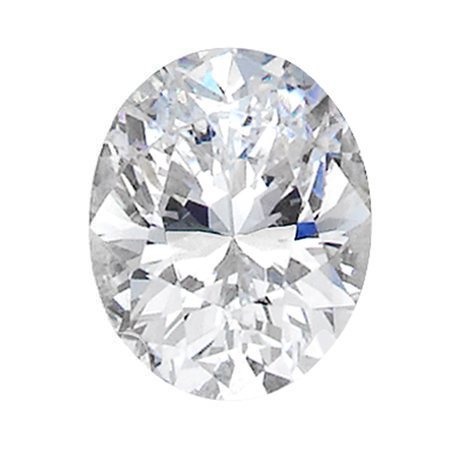
An oval cut diamond is a type of diamond cut, with a symmetrical, elongated, and rounded shape. With their larger surface area, oval diamonds optimize carat weight – meaning they often look larger than a round diamond of the same carat weight.
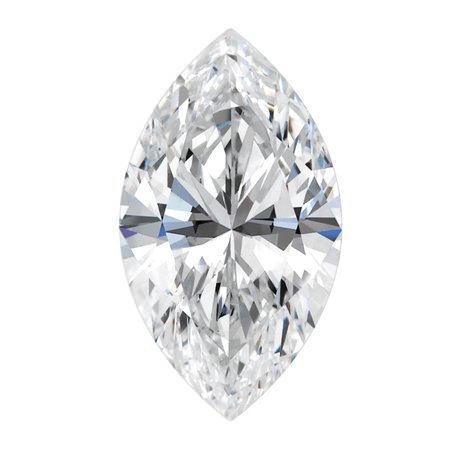
The marquise is a variant of round and pear shaped diamonds and, like the oval, is a perfect complement to long, slender fingers. But, as we mentioned, it can also create this effect thanks to its shape. The long-thin body and pointed ends draws the eye up, so your fingers will look longer and thinner when you're sporting this stone in your engagement ring.
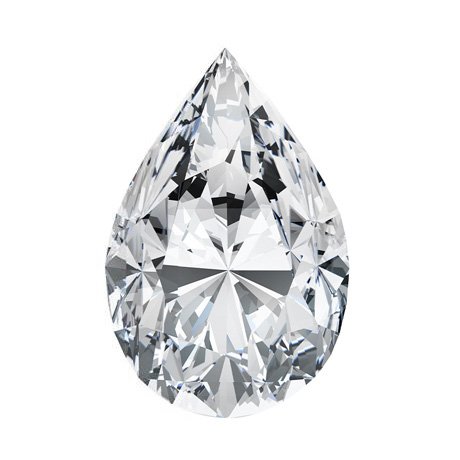
The pear diamond—also known as the teardrop or pendeloque cut—is unlike any other diamond cut. It’s called a modified brilliant cut, one that blends the Marquise and oval cuts with one rounded end and a point on the other. Its signature silhouette is instantly recognised and much beloved.

Heart a fancy cut and contains 56-58 facets that capture and reflect light, resulting in visible brilliance. The wings of the heart should be symmetrical, with a graceful curve that provides excellent fire, ending in a neat apex point.
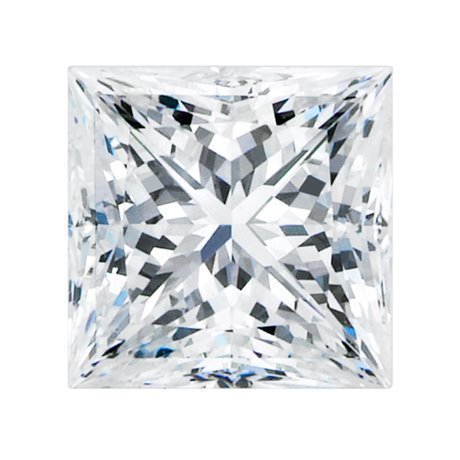
A princess cut diamond is traditionally a square diamond that offers excellent fire and brilliance. This fancy shape diamond is designed from the inverted pyramid of the rough diamond stone. Princess cuts, like this gorgeous 0.81ct I color, are among the most brilliant of all diamond shapes and are a popular choice for engagement rings. The highest quality princess cuts are those with a distinct square shape with a length to width ratio of 1.00 – 1.05.
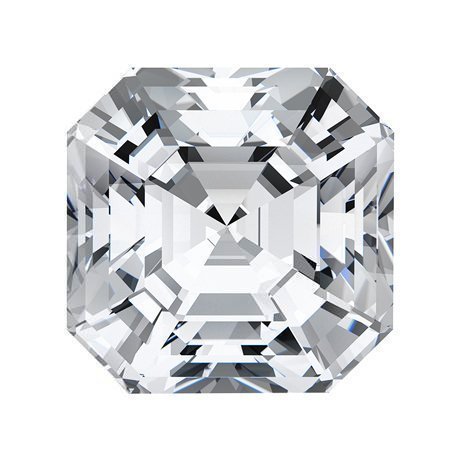
Asscher cut is the name given to a particular square, step cut diamond. Unlike the square shape princess cut diamond, Asscher diamonds feature large step cut facets, producing optical properties that appear like a ‘hall of mirrors’. With it’s signature clipped corners, Asscher diamonds are sometimes referred to as octagonal, or square emerald cuts.
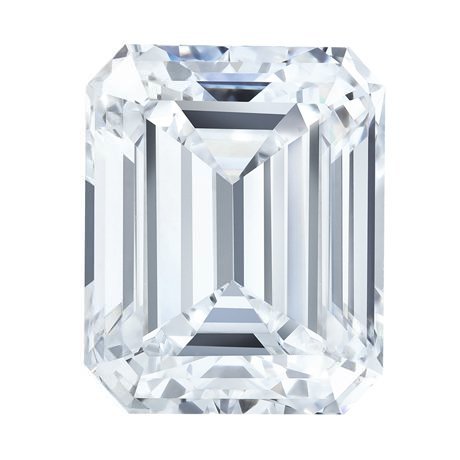
The emerald cut diamond flaunts an elongated, rectangular shape and chiseled step cuts, with straight linear facets—usually arranged parallelly down the stone. To add stability and prevent fractures, the corners of an emerald cut diamond are usually cropped.
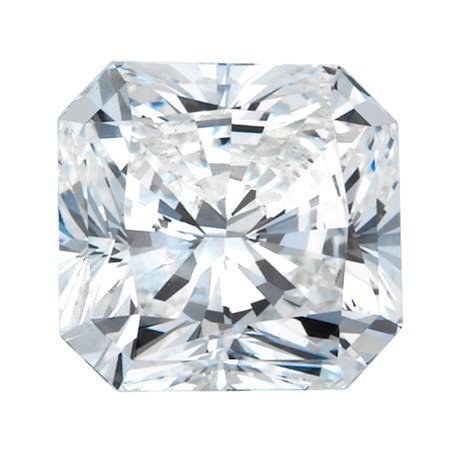
The radiant cut diamond owes its brilliance to the 70 facets found its pavilion and crown. The precision of each facet offers immense brilliance and fire. The radiant cut’s brilliance is surpassed only by the round brilliant cut.
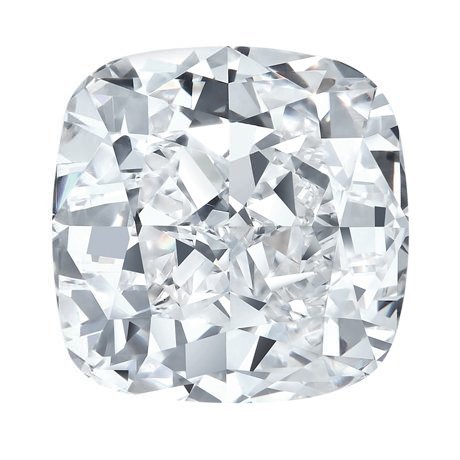
The cushion cut diamond once referred to as old mine cut) combines a square cut with rounded corners, much like a pillow (hence the name). This classic cut has been around for almost 200 years, and for the first century of its existence was the most popular diamond shape (similar to round cut today). Until the early 20th century, the cushion cut diamond was the de facto diamond shape

In diamonds, rarity equals value. With diamonds in the normal range, value is based on the absence of color, because colorless diamonds are the rarest. With fancy color diamonds—the ones outside the normal color range—the rarest and most valuable colors are saturated pinks, blues, and greens. In all cases, even very slight color differences can have a big impact on value. Compared to fancy yellows and browns, diamonds with a noticeable hint of any other hue are considerably more rare.
Even in light tones and weak saturation, as long as they show color in the face-up position, they qualify as fancy colors. Red, green, and blue diamonds with medium to dark tones and moderate saturations are extremely rare. Grading fancy color diamonds is complex and specialized, and it takes highly trained laboratory graders to complete the process accurately.

The hearts and arrows pattern (often marketed under brand names such as 'Hearts on Fire') refers to a symmetrical light pattern visible using a specialized viewer in diamonds cut within certain narrow specifications.
Hearts and Arrows Viewer Modern, portable H&A viewers The hearts and arrows pattern was first viewed
using a Firescope; a tool developed by Kazumi Okuda in the 1970s. Firescopes and their modern
equivalents (such as the H&A Viewer, Ideal-scope and ASET-scope) use colored reflectors to display a
pattern showing the direction and intensity of light emitted from a diamond. These colorful patterns
can
be evaluated to determine how much light is exiting the diamond at proper angles, and whether the
diamond is optically symmetrical (indicated by a uniform pattern).
In the example at left, red represents light being emitted from the diamond in a direction and
intensity
that will be perceived by the viewer as brightness. Pink areas represent areas of less brightness.
Dark
areas indicate areas where light is blocked by the viewers head (these areas are perceived as dark
flashes, or scintillation, when the viewer or the diamond moves). Finally, white areas indicate
where
light is traveling through the diamond, and 'leaking' out of the bottom (perceived as dull or dark
areas
in the diamond). Different types of viewers will use different color schemes, but all produce
similar
patterns.
| Size Range 0.30 up |
| FL, IF, VVS1, VVS2, VS1, VS2, SI1, SI2, SI3, I1, I2, I3 |
| D, E, F, G, H, I, J, K, L, M, N, O-P, Q-R, W-X, Y-Z |
| # | Cut Grades | Description |
|---|---|---|
| 1 | EX | Excellent |
| 2 | VG | Very Good |
| 3 | GD | Good |
| 4 | F | Fair |
| # | Polish | Description |
|---|---|---|
| 1 | EX | Excellent |
| 2 | VG | Very Good |
| 3 | GD | Good |
| 4 | F | Fair |
| # | Symmetry Grades | Description |
|---|---|---|
| 1 | EX | Excellent |
| 2 | VG | Very Good |
| 3 | GD | Good |
| 4 | F | Fair |
| # | Grade | Description |
|---|---|---|
| 1 | N(WT0) | None |
| 2 | NV | None Visible |
| 3 | WT1 | Minor |
| 4 | WT2 | Medium |
| 5 | WT3 | Major |
| # | Grade | Description |
|---|---|---|
| 1 | N(BT0) | None |
| 2 | NV | None Visible |
| 3 | BT1 | Minor |
| 4 | BT2 | Medium |
| 5 | BT3 | Major |
| # | Grade | Inc. Type | Location | Description |
|---|---|---|---|---|
| 1 | N(WC0 /WT0) | Open | --- | None |
| 2 | NV | Open | --- | None Visible |
| 3 | CO1 | Open | Crown | Minor |
| 4 | TO1 | Open | Table | Minor |
| 5 | CO2 | Open | Crown | Medium |
| 6 | TO2 | Open | Table | Medium |
| 7 | CO3 | Open | Crown | Major |
| 8 | TO3 | Open | Crown | Major |
| # | FL Grades | Parameters |
|---|---|---|
| 1 | N | None Fluorescence |
| 2 | FNT | Faint Fluorescence |
| 3 | MED | Medium Fluorescence |
| 4 | STG | Strong Fluorescence |
| 5 | VST | Very Strong Fluorescence |
| # | Grade | Color Shade | Color Shade Description |
|---|---|---|---|
| 1 | N | WH/OF WH/YL | - |
| 2 | NV | Brown/Grey/Pink | None Visible |
| 3 | BRN1 | Brown | Faint |
| 4 | BRN2 | Brown | Light |
| 5 | BRN3 | Brown | Dark |
| # | Grade | Size/Description |
|---|---|---|
| 1 | N(M0) | None |
| 2 | NV | None Visible |
| 3 | M1 | Minor |
| 4 | M2 | Medium |
| 5 | M3 | Major |
| # | Grade | % | Description |
|---|---|---|---|
| 1 | EC1 | 75% - 100% | Sure |
| 2 | EC2 | 50% - 74% | Medium |
| 3 | EC3 | 25% - 49% | Medium |
| 4 | V | 0% - 25% | Inclusion Visible |
| # | Grade | % | Description |
|---|---|---|---|
| 1 | EX | 75% - 100% | Ex H%A |
| 2 | VG | 50% - 74% | VG H%A |
| 3 | NV | 25% - 49% | None Visible |
| 4 | N | 0% - 25% | None |
| # | Grade | Description |
|---|---|---|
| 1 | CM | Canada Mark |
| 2 | CME | Canada Mark Eligible |
| 3 | FM | Forever Mark |
| 4 | FMG | Forever Mark Grading |
| 5 | FME | Forever Mark |
| 6 | FMI | Forever Mark Inscribed |
| # | Lab | Description |
|---|---|---|
| 1 | GIA | Gemological Institute of America |
| 2 | IGI | International Gemological Institute |
| 3 | HRD | Hoge Raad voor Diamand |
| 4 | EGL | European Gemological Laboratory |
| 5 | IIDGR | International Institute of Diamond Grading and Research |
| 6 | AGS | American Gem Society |
| 7 | FAITH | Hari Krishna Export's Certificate |
| 8 | FM | Forever Mark |
| 9 | FMI | Forever Mark Inscribed |
| 10 | FMG | Forever Mark Grading |
| 11 | FMG/I | Forever Mark Grading / Inscribed |
| This is the date on which new goods transfer for sale. |

Used to define the shape and proportions of a diamond, the cut is an influential factor on the diamond's fire,sparkle and brilliance.

The color ratings of diamonds are actually based on the absence of color.Ratings range from D (colorless) to Z(yellow), The less color the higher the grade.

Difficult to see with the naked eye, clarity is the degree to which a diamond is free from inclusions. Each diamonds receives a clarity grade on a scale of flawless to 13.
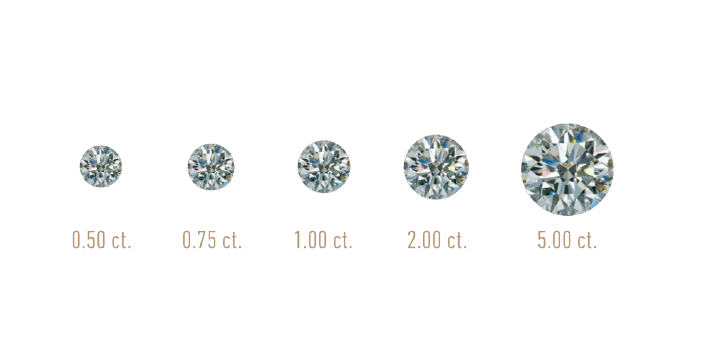
People often mistake carats as a measurement of size, but they actually measure weight. Two diamonds of equal weight can have unequal value depending upon the cut, color, and clarity of each.
